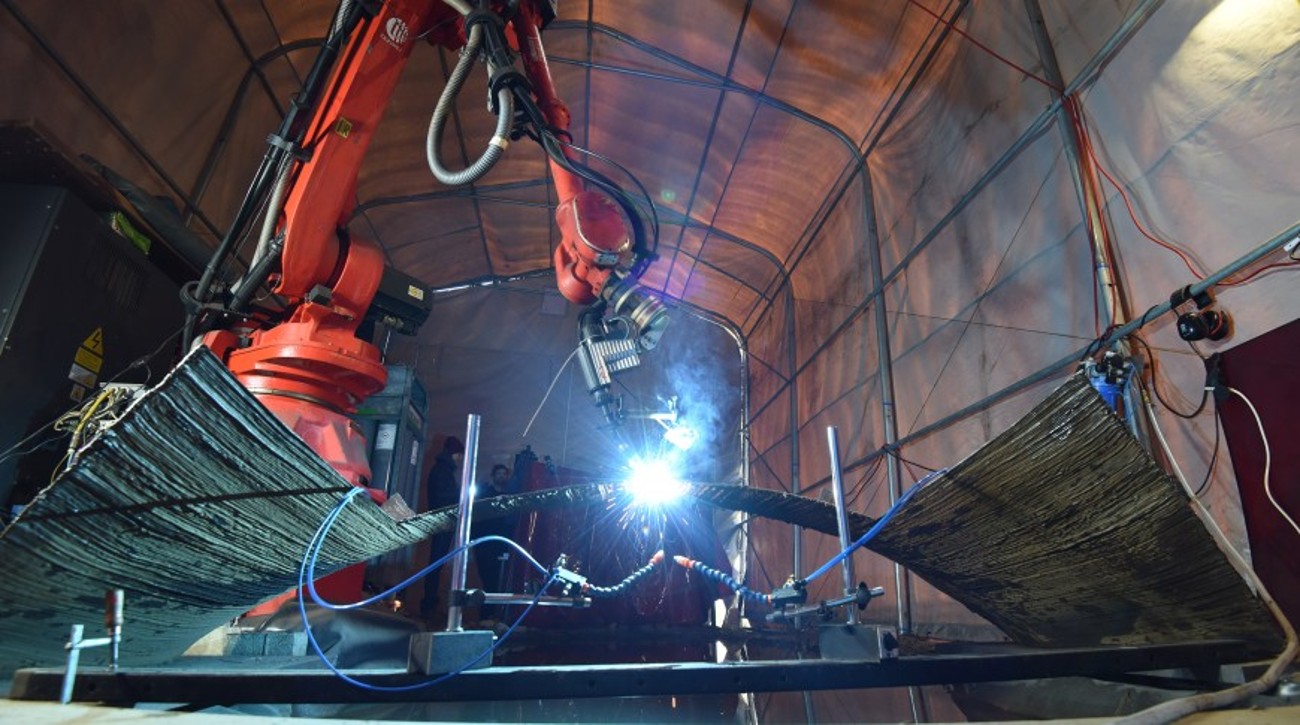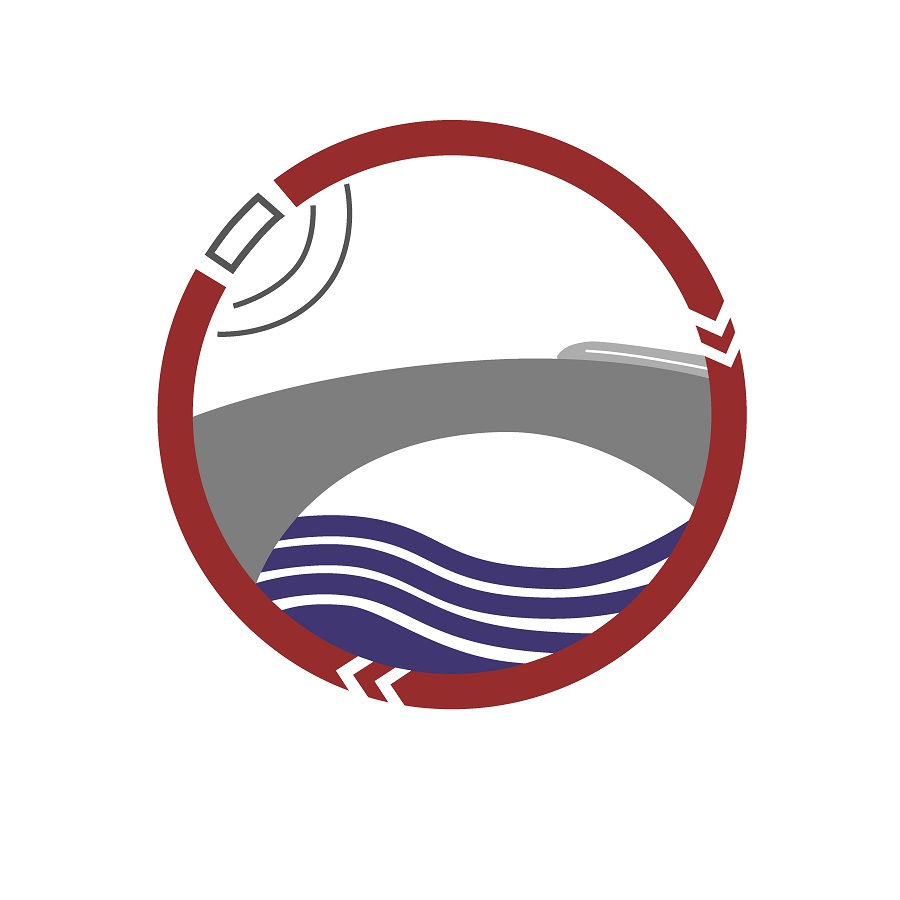The idea of producing a bridge using 3D printing is not entirely new. In the Netherlands, a steel bridge is also currently being printed using the additive process. There, the company MX3D manufactures the bridge using several robots in an industrial hall. The TU project is nevertheless outstanding. “The bridges printed up to now have always been produced vertically, because otherwise the liquid weld metal would drip down,” explains Thilo Feucht, research assistant at the Institute for Steel Construction and Mechanics of Materials (IFSW). “Our process allows printing at an angle. The weld metal still remains in its place”.
The IFSW of the TU Darmstadt has two welding robots with which the scientists are researching various possibilities for the application of additive manufacturing in steel construction. For the AM Bridge 2019 project, researchers Christopher Borg Costanzi, Maren Erven and Thilo Feucht have combined their expertise in the fields of additive manufacturing in civil engineering and 3D printing with steel. The decision to print a steel bridge was made after a visit to the MX3D team in Amsterdam.
The plan: welding a complete bridge over water
But the Darmstadt team wanted more: instead of printing individual components, the robots welded the bridge as a whole, on site and above water. The idea was realised with the aid of the “CMT Cycle Step” welding process. What is special about it: welding spots can be produced in any size and reproduced precisely. This means that the height and thickness of the weld seam can be precisely determined. In addition, the pause times between cycles can be selected – each weld spot is thus given sufficient time to cool down and become firm.
And it was precisely this special process that made it possible to print the steel bridge at its location on the Lichtwiese. “The MX3D company has created a very artistic structure with a bridge. But what they did not succeed in: building it over water from two sides with robots. This is what our team has now achieved,” says Professor Ulrich Knaack from the Institute for Statics and Construction, Facade Technology Department, happily.
“In all previous projects, including the one in Amsterdam, bridge sections were produced in production halls, assembled and then brought to the site,” adds Professor Jörg Lange from IFSW. “The special feature of our bridge is that it is the first bridge in the world that was produced directly on site by the printer. Over running water.”
The “Wire + Arc Additive Manufacturing” process
The process used by the Darmstadt scientists is the so-called “Wire + Arc Additive Manufacturing” (WAAM). It is particularly well suited for steel construction and is similar to gas shielded metal arc welding. The wire electrode, or more precisely the weld metal, serves as the printing material. With this process, even large components can be produced in layers.
3D printing is currently one of the most exciting technologies. Since hardly any waste is produced during the manufacturing process, components can be produced in a material- and resource-saving manner. In addition, complicated shapes can also be produced. 3D printing and additive manufacturing are currently a hot topic in research, and the technology is advancing rapidly.
“I find it inspiring to implement our project on a water body. It invites us engineers to dream: You could do the whole thing with larger spans. With a robot that walks along the bank and prints. That is fascinating! And this is how we will come a lot closer to building in the future”.
Thilo Feucht, research assistant at the department of steel construction
Martina Schüttler-Hansper





